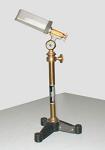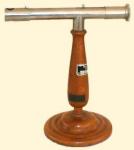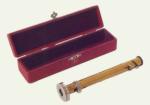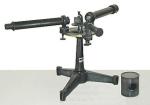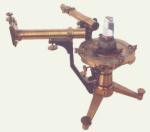Description
It stands on a support with variable height. The two prisms, the crown one , with a
15 degrees 15 minutes angle, the other in flint, with a 8 degrees 6 minutes, both calculated
on the basis of the glass quality that is used. They are held by a horizontal plate and stuck
on two columns turning on their axis. By using the two prisms separately, we notice the images
of the objects appear displaced and coloured on the edges. If we use them in pair, we still
have the deviation across the two prisms, but we do not obtain the colouration.
|
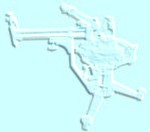
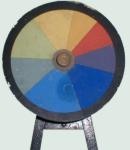
 Menu
Menu